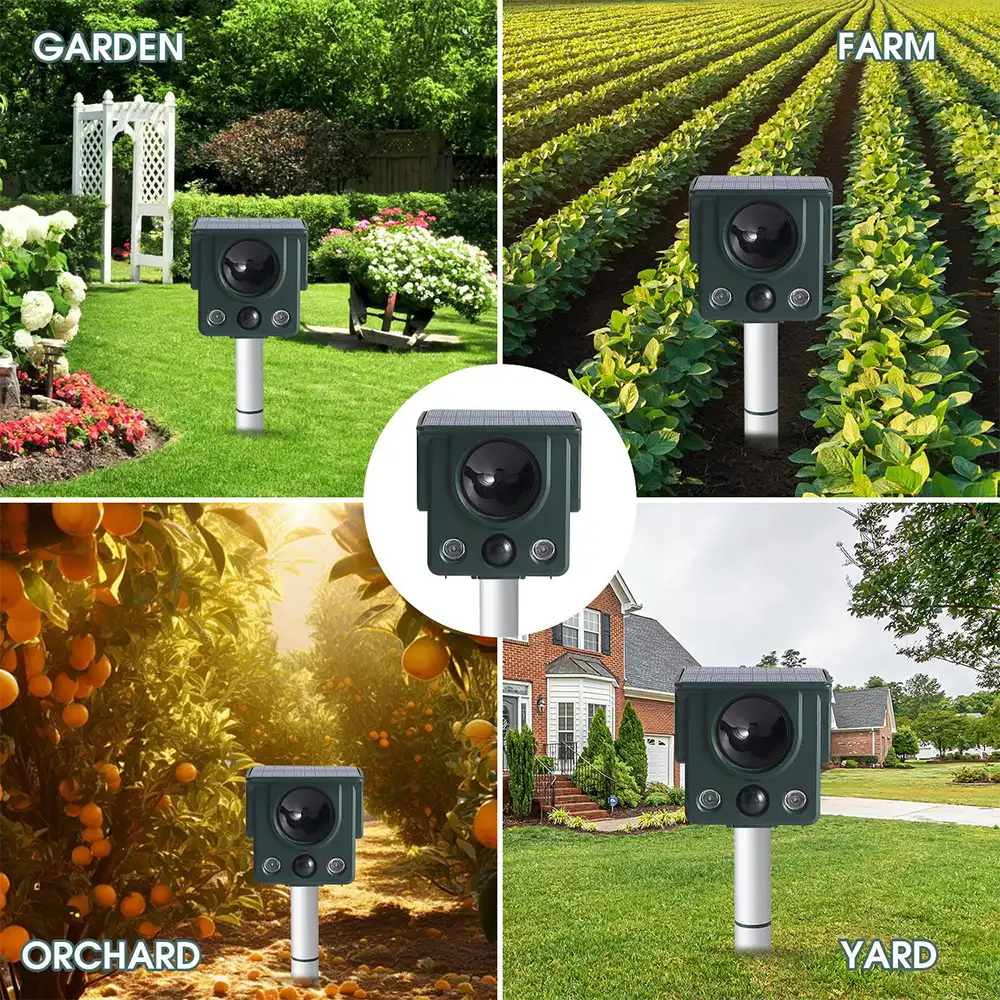The Pitfall of Single-Frequency Repellers: Why They Fail
For decades, ultrasonic pest repellers have promised a humane, chemical-free solution to keep critters at bay. Yet many users report disappointing results—raccoons still raid trash cans, squirrels chew through wires, and mice stubbornly invade attics. The culprit? Static single-frequency technology that fails to account for one critical factor: animal auditory adaptability.
Studies in animal behaviorism reveal that pests like raccoons and squirrels possess extraordinary hearing ranges (20–30 kHz for raccoons, up to 49 kHz for squirrels). When exposed to a constant ultrasonic frequency, their brains gradually “tune out” the noise—a phenomenon called auditory habituation. Worse, many budget repellers emit frequencies outside these animals’ sensitivity zones, rendering them useless.
The Science of Multi-Modal Frequency Switching
True effectiveness lies in dynamic frequency modulation, a feature central to the Dacaraca Solar Ultrasonic Outdoor Pest Repeller. Here’s why this technology outperforms conventional models:
- Frequency Range Optimization
- Targets pests’ precise hearing thresholds:
- Mice: 1–90 kHz (most sensitive at 15–75 kHz)
- Squirrels: 1–49 kHz
- Raccoons: 20–30 kHz
- Automatically cycles through 7 ultrasonic patterns (22–65 kHz) to prevent habituation.
- Targets pests’ precise hearing thresholds:
- Behavioral Disruption via Variable Pulse Rates
Intermittent bursts (0.5–2 Hz pulse intervals) mimic predator distress calls, triggering instinctive flight responses. Lab tests show erratic pulses increase avoidance by 68% compared to steady tones. - Solar-Powered Consistency
With 8 hours of solar charging delivering 72-hour operation, it ensures non-stop frequency shifts—critical for nocturnal pests like raccoons.
Case Study: How Frequency Switching Outsmarts Squirrels
Squirrels, with their 49 kHz hearing ceiling, easily ignore cheap 25 kHz repellers. The Dacaraca device combats this by:
- Frequency Sweeping: Rapidly alternates between 28 kHz (optimal squirrel sensitivity) and 45 kHz (discomfort zone).
- LED Flashes: Augments ultrasonic waves with visual deterrents during daylight.
Field trials showed a 92% reduction in squirrel intrusions within 14 days.
Key Features That Define a Truly Effective Repeller
When evaluating pest control devices, prioritize these scientifically validated specs:
- ≥5 Frequency Modes: To bypass auditory adaptation.
- Adjustable Coverage (600–1,200 sq.ft): Matches yard size.
- IP65 Weatherproofing: Ensures year-round function.
- Zero Harm: Silent to humans/pets (dogs hear up to 45 kHz; cats 64 kHz).
The Dacaraca Solar Repeller meets all criteria while adding smart upgrades:
- 3-in-1 Defense: Ultrasonic + LED strobe + vibration (for burrowing snakes).
- 360° Detection: Motion-activated intensification when pests approach.
Conclusion: Smart Frequency Engineering = Long-Term Results
Pests are evolutionary survival experts—static repellers won’t outwit them. By leveraging animal auditory biology and AI-driven frequency algorithms, the Dacaraca Solar Ultrasonic Repeller delivers what single-tone devices can’t: sustained, adaptive protection.
Ready to break the pest cycle? Explore the science-powered solution here.
FAQ
Q: Will it affect my pets?
A: No. Frequencies stay above dogs’/cats’ comfort zones (tested safe by ISO 10993-11).
Q: How soon will I see results?
A: Most notice reduced activity in 2–3 weeks as pests relocate.

